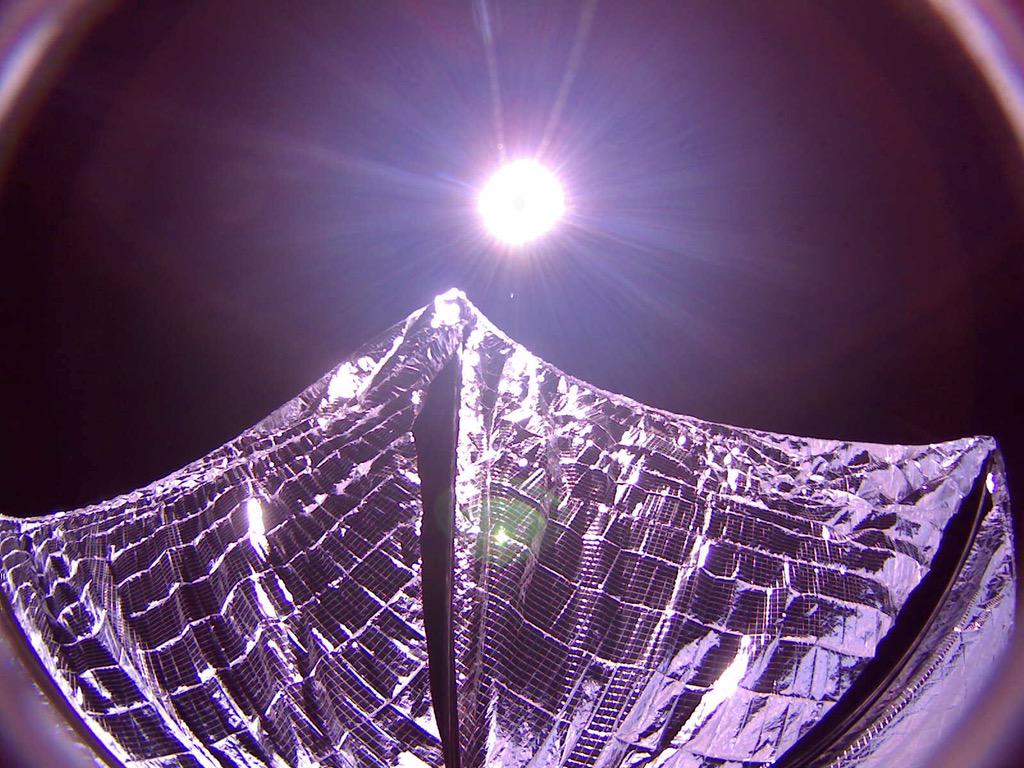
Photo from June 9 tweet by Bill Nye
CEO of the Planetary Society
In a tweet Bill Nye The Science Guy describes this photo as "a complete image of #Light Sail in space! The future of space travel . . ."
This light sail launched on May 20 as a test, an early step toward the goal to "sail a spacecraft no bigger than a bread box, on beams of light," he said. "Imagine it: unlimited free energy from the Sun will provide CubeSats with propulsion and revolutionize access to space for low-cost citizen projects. This means that spacecraft, especially small ones like CubeSats, won't have to carry heavy fuels into orbit, and that the acceleration will be continuous."
Two days after launch a software glitch made the little satellite unable to deploy its sail. On May 31, contact was made and on June 3 the solar panels were deployed. June 4 communications were again lost, but on June 6 communications were restored sail deployment commenced on June 7. On June 10 photos (including the one above) were successfully downloaded as well as extensive data.
The original plan was for the satellite's orbit to degrade within two to ten days following sail deployment, and fall back to Earth, burning up on reentry. LightSail-A made its fiery reentry June 14, its mission a success.
In Murder on Ceres, my science fiction/murder mystery, the loss of a solar sail proves to be an important plot point.
"Solar Sail Sakurakaze with Mark A. Warner aboard unaccounted for. No contact. No request for assistance."
"Aptly named, the Sakurakaze looked like a sakura blossom. Its five sails extended radially in graceful curves, each with a notch in its distal end. The furled sails would open as she pulled away from the dock. Like a flower blooming."
Specs on Warner's solar sail read as follows:
"Four-passenger sport class Kono II with Stang auxiliary thrusters. It could reach more than ten times enough velocity to escape Low Ceres Orbit. Enough to escape Low Mars Orbit."
The Deuce was constructed of carbon composite to reduce over-all weight without sacrificing strength and durability, the cabin hung below the sails. The builder's description was pure promotion, "Its black exterior reminiscent of ancient Japanese lacquer ware. The interior finished in synthetic teak and white ceramic, for the warm look of wood and the classy simplicity of porcelain, while staying well within weight limitations."
The future is now.
No comments:
Post a Comment